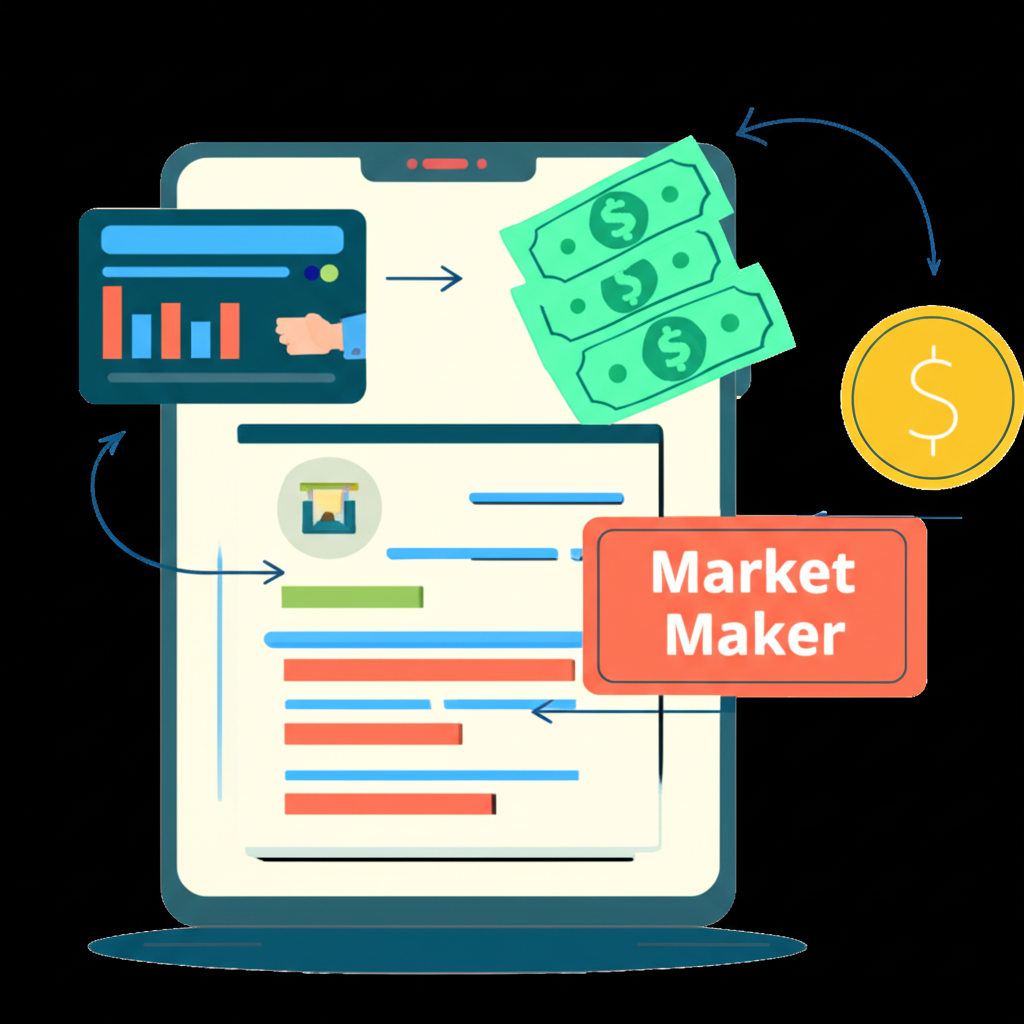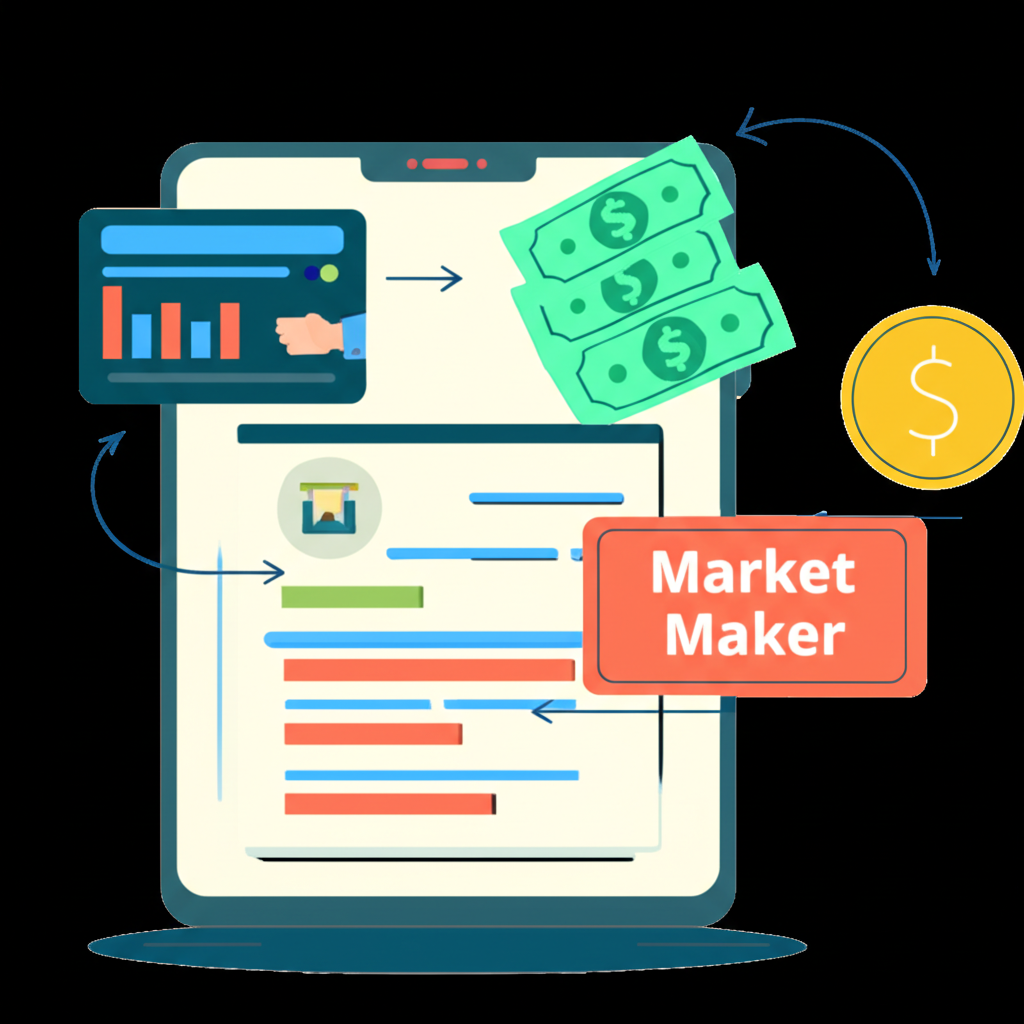Understanding Payment for Order Flow (PFOF): The Foundation of Commission-Free Trading

Payment for Order Flow, commonly known as PFOF, is a financial arrangement in which brokerage firms receive compensation from market makers in exchange for routing customer trade orders to them for execution. This practice has become a cornerstone of the modern zero-commission trading model, allowing platforms like Robinhood to eliminate per-trade fees without sacrificing revenue. At its heart, PFOF transforms the act of executing trades into a monetizable service—brokers essentially sell the right to fulfill their clients’ buy and sell instructions to high-frequency trading firms capable of absorbing and profiting from retail order volume.
The process starts the moment an individual investor submits a trade through a mobile app or desktop platform. Rather than sending that order directly to a public exchange such as the New York Stock Exchange or Nasdaq, the brokerage channels it to a private market maker. These intermediaries—often sophisticated algorithmic trading firms—compensate brokers for access to this steady stream of orders because it provides them with valuable data and opportunities to profit from the bid-ask spread. As electronic trading evolved and competition among brokerages intensified, traditional commission-based models gave way to this new paradigm, making commission-free investing not only possible but profitable for the firms offering it.
Robinhood’s Business Model: How PFOF Fuels Zero Commissions

Robinhood Markets revolutionized retail investing by popularizing commission-free trades, a feat made possible through its heavy reliance on Payment for Order Flow. For Robinhood, PFOF is far more than a side revenue stream—it’s a core pillar of its business model. By removing transaction fees, the company lowered the financial barrier to entry, attracting millions of first-time investors, particularly younger and tech-savvy users who previously found traditional brokerage costs prohibitive.
This strategy didn’t just grow Robinhood’s user base; it disrupted the entire brokerage industry. The company openly acknowledges the importance of PFOF in its financial disclosures. In its Third Quarter 2023 Results, Robinhood reported $185 million in transaction-based revenue, a category dominated by PFOF. This included $24 million from equities, $120 million from options, and $23 million from cryptocurrency transactions. These figures highlight just how vital PFOF is to sustaining Robinhood’s zero-fee promise and funding its broader ecosystem of financial services.
The Mechanics of PFOF: Market Makers and Order Execution

To fully grasp how PFOF operates, it’s essential to understand the function of market makers. Companies like Citadel Securities, Virtu Financial, and Two Sigma Securities play a pivotal role in today’s markets by continuously quoting both buy (bid) and sell (ask) prices for stocks and other securities. Their primary goal is to maintain liquidity, ensuring investors can enter and exit positions quickly and efficiently.
When a retail investor places an order through a PFOF-reliant broker like Robinhood, that trade is typically sent to one of these market makers. In return, the broker receives a small payment per share traded. Market makers profit by capturing the spread—the difference between the bid and ask prices. For example, if a stock’s best public bid is $10.00 and the ask is $10.01, a market maker might buy from a seller at $10.00 and immediately sell to a buyer at $10.0075, pocketing the tiny margin. While the gain per share is minuscule, the cumulative effect across millions of daily trades makes this an immensely scalable business. The influx of retail order flow gives them predictable volume and strategic insight, which justifies paying brokers for exclusive access.
Controversies and Criticisms: Why PFOF is Under Scrutiny
Despite enabling free trading, PFOF has sparked intense debate, especially in relation to Robinhood’s widespread use of the model. Critics argue that the practice introduces a structural conflict of interest: when brokers earn money based on where they route orders, there’s a financial incentive to prioritize the highest-paying market maker rather than the one offering the best execution for the customer.
This raises serious concerns about whether investors are truly receiving “best execution”—a regulatory requirement mandating that brokers secure the most favorable terms available. While firms like Robinhood maintain they meet this obligation, proving consistent compliance is complex. Consumer advocates warn of a “hidden cost” to PFOF: even if investors don’t pay a direct commission, they may end up with slightly worse prices over time, losing fractions of a cent per share that can accumulate across frequent trades. Additionally, many retail users remain unaware of how PFOF works or how their orders are handled behind the scenes, leading to calls for clearer, more accessible disclosures.
Regulatory Landscape: SEC Actions, Fines, and Congressional Debates
The controversy surrounding PFOF has drawn significant attention from regulators and lawmakers. The Securities and Exchange Commission (SEC) has taken a close look at how brokerages implement this practice, particularly in cases where transparency and execution quality may be compromised.
In December 2020, the SEC fined Robinhood Financial $65 million for failing to disclose its PFOF revenue sources and for misleading customers about execution quality between 2015 and 2018. The regulator found that Robinhood did not inform users that it received substantial payments from market makers and that these arrangements often resulted in suboptimal trade prices. Beyond this enforcement action, former SEC Chair Gary Gensler has repeatedly expressed concern about PFOF’s potential to distort market fairness. Congressional hearings and proposed legislation have further amplified scrutiny, with some lawmakers advocating for stricter rules or even a complete ban. The debate centers on balancing innovation and accessibility with the need for transparent, equitable markets.
Robinhood’s Stance and the Future of PFOF
In the face of criticism and regulatory pressure, Robinhood’s leadership, including CEO Vlad Tenev, has consistently defended the company’s use of PFOF. The central argument is straightforward: PFOF has democratized investing by making it affordable for millions who previously avoided the stock market due to high trading fees.
Robinhood also contends that competition among market makers for order flow leads to better execution outcomes. The company claims that market makers, eager to win business, often provide price improvement—executing trades at rates better than the National Best Bid and Offer (NBBO). Robinhood regularly publishes execution quality reports to back this up, showing that a significant portion of its trades are filled at improved prices. Still, the long-term sustainability of PFOF remains uncertain. While a full ban could face resistance from the industry, evolving regulations may require greater transparency, tighter execution standards, or alternative revenue models that reduce reliance on order flow payments.
PFOF’s Impact on Retail Investors: Pros and Cons
For individual investors, the effects of PFOF are multifaceted. On the positive side, the elimination of commissions has made investing more inclusive. Small investors can now trade frequently, diversify their portfolios, and participate in markets without worrying about fees eroding their returns. This shift has empowered a generation of new market participants who might otherwise have stayed on the sidelines.
On the downside, the lack of visible fees doesn’t mean trading is cost-free. The potential for slightly worse execution prices means investors might pay a hidden premium over time. While individual trades may show minor improvements, the overall benefit to the broker—through PFOF payments—may outweigh the incremental gains to the customer. Furthermore, the opacity of routing practices makes it difficult for investors to assess whether their interests are fully aligned with their broker’s. From a systemic perspective, some experts worry that PFOF contributes to market fragmentation and reduces price transparency, potentially weakening the integrity of public exchanges.
Deeper Dive: Execution Quality and Price Improvement
Execution quality is a critical but often overlooked factor in evaluating PFOF’s impact. While all brokers are legally required to pursue “best execution,” the methods used to achieve this can vary. One key metric is price improvement—when a trade is executed at a better price than the NBBO at the time of order receipt. For example, if a stock’s NBBO is $10.00 (bid) and $10.01 (ask), a buy order filled at $10.005 represents a half-cent improvement.
Supporters of PFOF argue that market makers, competing for order flow, are incentivized to offer such improvements to attract more volume. However, skeptics point out that these gains may be marginal and inconsistent, especially for less liquid stocks. Moreover, the sheer scale of order flow allows market makers to profit even when offering slight improvements. Regulators assess execution quality using metrics like effective spread (the average difference between execution price and midpoint of the NBBO), realized spread (which accounts for short-term price movements), and fill rates. These indicators help determine whether PFOF truly benefits investors or primarily serves broker and market maker profits.
Beyond PFOF: Exploring Alternative Business Models for Brokers
While PFOF dominates the U.S. retail brokerage landscape, it’s not the only way to fund a trading platform. Historically, brokers earned income through per-trade commissions, but this model has largely disappeared for equity trades. Today, firms rely on a mix of alternative revenue streams to stay profitable:
- Interest on Cash Balances: Brokers earn interest by sweeping uninvested cash into money market funds or bank deposits, often sharing a portion with customers.
- Margin Lending: Charging interest on borrowed funds used for leveraged trading.
- Premium Services: Offering paid subscriptions for advanced research, real-time data, or algorithmic trading tools.
- Securities Lending: Lending out customer-owned shares to short sellers in exchange for fees.
- Foreign Exchange Fees: Capturing spreads on currency conversions for international trades.
- Account Fees: Charging for wire transfers, inactivity, or paper statements.
In some countries, such as Canada and the UK, PFOF is restricted or banned, forcing brokers to rely more on transparent fee structures or subscription models. As regulatory pressure mounts in the U.S., hybrid approaches—such as low-commission models combined with premium services—may gain traction, offering a path forward that doesn’t depend entirely on order flow payments.
Conclusion: Navigating the Complexities of PFOF with Robinhood
Payment for Order Flow, particularly as implemented by Robinhood, sits at the intersection of innovation and controversy in modern finance. It has undeniably expanded access to the markets, enabling millions to invest without paying per-trade fees—a transformative development for financial inclusion. Yet, this benefit comes with trade-offs: questions about execution quality, potential conflicts of interest, and limited transparency continue to challenge the model’s long-term legitimacy.
Regulatory oversight from the SEC and ongoing legislative discussions reflect a growing demand for accountability. For retail investors, understanding how PFOF works is essential to making informed choices. While zero commissions are appealing, recognizing the potential hidden costs and systemic implications allows for a more nuanced evaluation of brokerage services. As the debate evolves, the future of PFOF may hinge on striking a sustainable balance between accessibility, fairness, and market integrity—one that preserves the gains of democratized investing while safeguarding investor trust.
Does Robinhood still utilize Payment for Order Flow (PFOF) as a core part of its business model?
Yes, Robinhood continues to rely heavily on Payment for Order Flow (PFOF) as a fundamental component of its revenue generation and to support its commission-free trading model. It is a significant source of income for the company.
How significant is PFOF to Robinhood’s overall revenue, and how has this changed over time?
PFOF is highly significant to Robinhood’s revenue. While the exact percentage can fluctuate quarter-to-quarter and by asset class (equities, options, crypto), transaction-based revenues, largely driven by PFOF, consistently represent a substantial portion of their total income. For instance, in Q3 2023, PFOF from equities and options alone contributed over $140 million.
What are the primary criticisms and controversies surrounding Robinhood’s use of PFOF?
Primary criticisms include:
- **Conflict of Interest:** Concerns that brokers prioritize the market maker who pays the most over obtaining the best price for the customer.
- **Best Execution:** Doubts about whether investors consistently receive the most favorable execution prices.
- **Lack of Transparency:** Difficulty for retail investors to understand how their orders are routed and the true cost implications.
- **Hidden Costs:** The argument that while commissions are zero, investors might pay slightly more through less optimal execution.
Has the Securities and Exchange Commission (SEC) or other regulators taken action against Robinhood regarding PFOF?
Yes, the SEC has taken action. In December 2020, the SEC fined Robinhood $65 million for allegedly misleading customers about its PFOF practices and failing to meet its best execution obligations. Regulatory scrutiny of PFOF continues to be a prominent issue.
How does PFOF affect the quality of trade execution for Robinhood users, and is it always “best execution”?
Robinhood claims that competition among market makers for order flow leads to price improvement for its users, often resulting in executions better than the publicly quoted prices. However, critics argue that while some price improvement may occur, it might not always represent the absolute “best execution” possible, and the overall benefit to the broker (via PFOF) may outweigh the incremental benefit to the investor.
Which other major brokerage firms besides Robinhood engage in Payment for Order Flow?
Many other major U.S. brokerage firms that offer commission-free trading also engage in PFOF, including Schwab, Fidelity, E*Trade, and TD Ameritrade (now part of Schwab). While the extent of their reliance on PFOF may vary, it is a common industry practice for zero-commission models.
What is the Robinhood CEO’s (Vlad Tenev) current stance or defense regarding the company’s PFOF practices?
Vlad Tenev and Robinhood consistently defend PFOF, arguing that it enables commission-free trading, thereby democratizing access to financial markets. They also contend that the competitive nature of PFOF leads to better execution quality and price improvement for retail investors, often surpassing public exchange prices.
Are there any legislative efforts in the US Congress aimed at regulating or banning PFOF for brokers like Robinhood?
Yes, there has been ongoing legislative interest and discussions in the U.S. Congress regarding PFOF. Various proposals and inquiries have been made to investigate its impact, consider stricter regulations, or even explore the possibility of banning the practice, though no definitive new laws have been enacted to date.
How can investors determine if their broker is providing the best possible execution given the PFOF model?
Investors can review their broker’s quarterly Rule 606 reports, which detail how customer orders are routed and provide information on execution quality. While these reports can be complex, they offer transparency into which market makers receive order flow and the average price improvement (or disimprovement) achieved.
What are the potential future implications for Robinhood and retail trading if PFOF regulations were to change significantly?
Significant changes to PFOF regulations, such as stricter disclosure requirements, limitations on payments, or an outright ban, could profoundly impact Robinhood and other brokers. It might force them to seek alternative revenue streams, potentially leading to the reintroduction of commissions, increased fees for other services, or a shift towards different business models to sustain commission-free trading.

留言